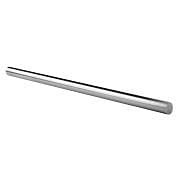Knurling wheels and knurling wheel holders
In the world of machine shops, knurling wheels and knurl holders are essential tools for precise, high-quality machining. Knurling wheels, also known as knurling rolls, are grooved cylinders that imprint a series of small grooves or ribs on a metal surface, creating non-slip textures or improving the aesthetics of the machined part. This operation, known as knurling, is essential to ensure a secure grip on components such as knobs, screws and other fasteners.
Knurl holders, on the other hand, are tools designed to hold knurling wheels securely during the machining process. They ensure that the knurling wheel remains stable and aligned, thus enabling uniform and precise knurling. Knurling wheels holders can be used on lathes, milling machines and other mechanical machinery, making them versatile and indispensable in any workshop that deals with metal machining.
There are several variations of knurling wheels, including roller knurling wheels and toothed wheel knurling wheels. Roller knurling wheels are ideal for linear machining, while cogwheel knurling wheels are used to create intricate and detailed patterns. Both types of knurling wheels can be mounted on specific knurling wheel holders, which can be adapted according to the machining requirements and the type of machine used.
The importance of choosing the right knurling wheels and knurl holders cannot be underestimated. Using quality tools ensures not only greater precision in machining, but also a reduction in production time and maintenance costs. High-quality materials, such as hardened steel and tungsten carbide, are often used for the manufacture of knurling wheels, ensuring a long service life and high resistance to wear.
In addition, technological innovation has led to the development of adjustable knurl holders, which allow the depth and angle of knurling to be easily adjusted, offering unprecedented flexibility in machining. This feature is particularly useful in large-scale production contexts, where precision and speed are crucial factors.
Knurling tools and knurling holders represent a perfect combination of precision, durability and versatility. Choosing the right knurling tools can make the difference between mediocre and excellent machining. Investing in quality tools is the first step to ensure the success and competitiveness of your workshop.












